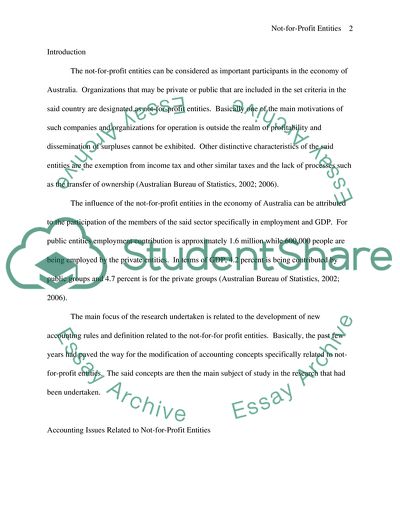Cite this document
(Accounting Issues of Not-for-Profit Entities in Australia Coursework, n.d.)
Accounting Issues of Not-for-Profit Entities in Australia Coursework. https://studentshare.org/finance-accounting/1715137-not-for-profit-entities-usually-receive-minimal-if-any-revenue-from-traditional-sources-like-sales-discuss-the-accounting-issues-that-arise-because-of-this
Accounting Issues of Not-for-Profit Entities in Australia Coursework. https://studentshare.org/finance-accounting/1715137-not-for-profit-entities-usually-receive-minimal-if-any-revenue-from-traditional-sources-like-sales-discuss-the-accounting-issues-that-arise-because-of-this
(Accounting Issues of Not-for-Profit Entities in Australia Coursework)
Accounting Issues of Not-for-Profit Entities in Australia Coursework. https://studentshare.org/finance-accounting/1715137-not-for-profit-entities-usually-receive-minimal-if-any-revenue-from-traditional-sources-like-sales-discuss-the-accounting-issues-that-arise-because-of-this.
Accounting Issues of Not-for-Profit Entities in Australia Coursework. https://studentshare.org/finance-accounting/1715137-not-for-profit-entities-usually-receive-minimal-if-any-revenue-from-traditional-sources-like-sales-discuss-the-accounting-issues-that-arise-because-of-this.
“Accounting Issues of Not-for-Profit Entities in Australia Coursework”. https://studentshare.org/finance-accounting/1715137-not-for-profit-entities-usually-receive-minimal-if-any-revenue-from-traditional-sources-like-sales-discuss-the-accounting-issues-that-arise-because-of-this.


